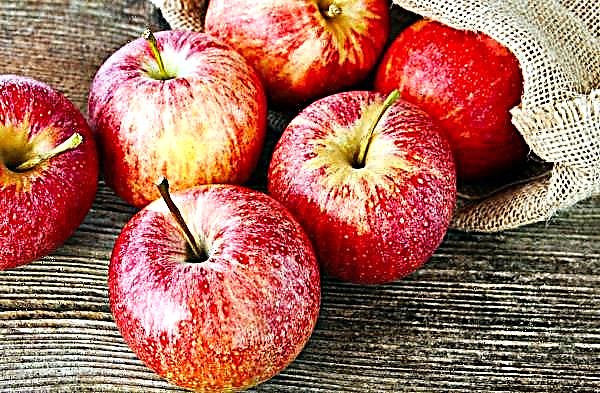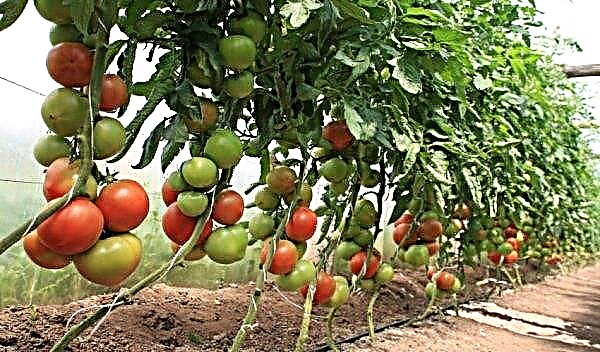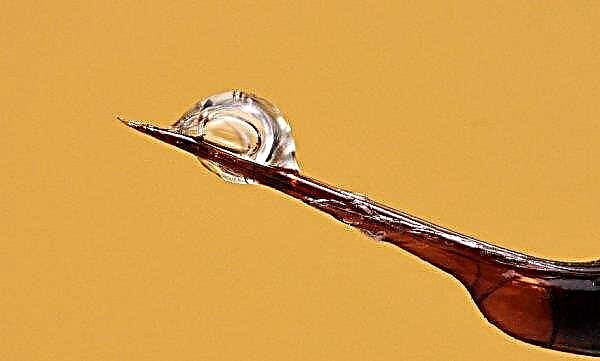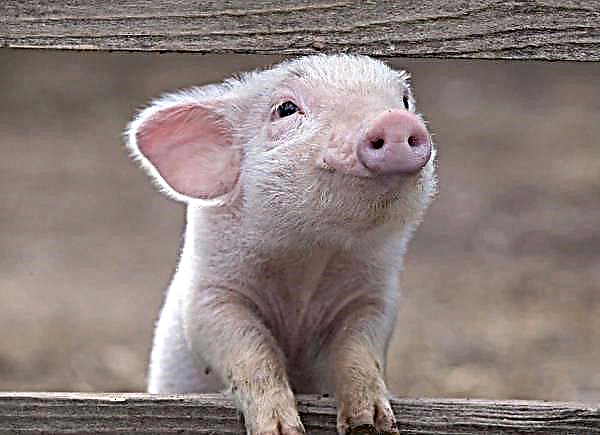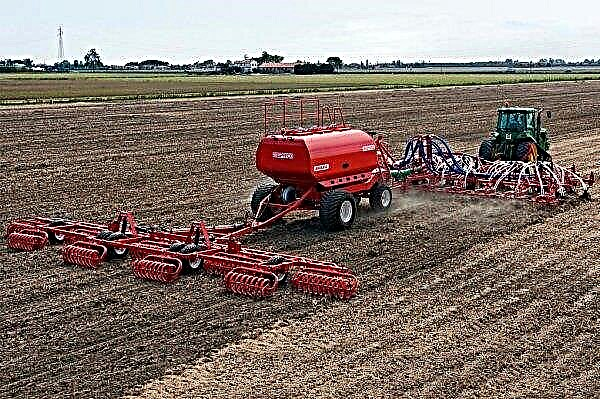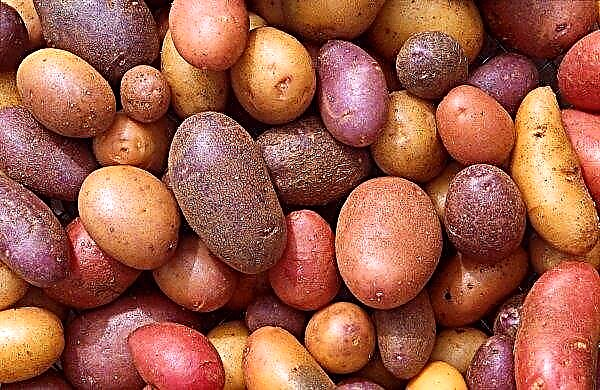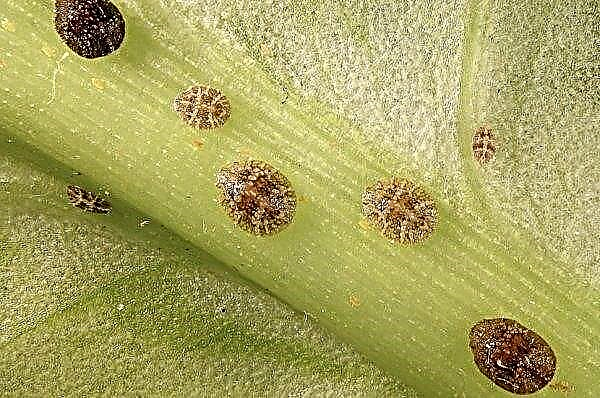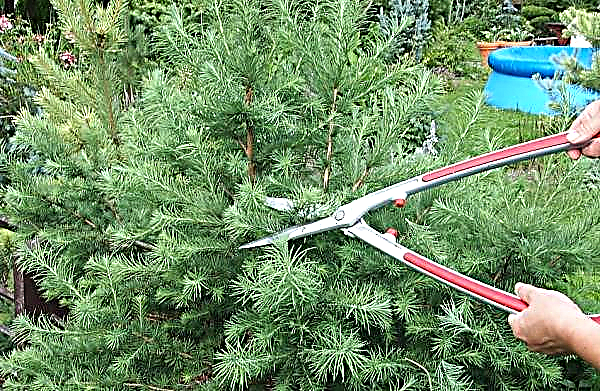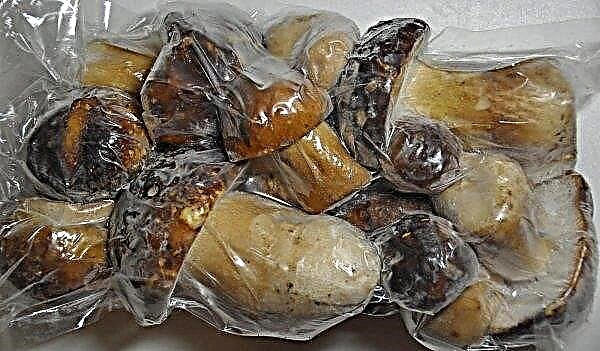Small bulges or erosion on the surface of potato tubers - this is the first sign of damage to the crop by scab. This dangerous infectious disease among the culture is quite widespread and if untimely eliminated it can become the main cause of the loss of presentation and taste characteristics of potatoes. In this article, you will learn in detail about the main reasons for the development of scab on tops and potato tubers, and also learn how to get rid of this infection.
Description of the disease
Scab is a dangerous fungal disease that causes infectious damage to the stem of the root system and potato tubers. An ailment arises due to the development of specific microorganisms on the plant belonging to the group of actinomycetes and deuteromycetes. Despite the fact that these microorganisms are considered conditionally safe, therefore not capable of causing serious consequences for the plant organism and humans, this infection in gardening is considered one of the most dangerous.
Did you know? The most expensive potato in the world is La Bonnotte (about 500 euros per kilogram). It is grown only in one place, on the tiny island of Nurmatier, near the Atlantic coast of France.
With the defeat of the aerial part and the root system, fungi inhibit the growth and development of potatoes, and in the case of wide spread, they can cause the death of both individual plants and all plantings. However, most often the disease is almost asymptomatic, affecting only the root system and tubers. This leads to dire consequences, the crop dramatically loses its shelf life and presentation, the amount of starches and other nutrients in the potato decreases. In addition, the tubers acquire an uncharacteristic, often unpleasant aftertaste, which can lead to the rejection of the entire crop. There are several reasons for the mass infection of potatoes, the process develops as a result of:
There are several reasons for the mass infection of potatoes, the process develops as a result of:
- low-quality (previously infected) planting material;
- non-compliance with the basic rules and principles of crop rotation;
- uncontrolled use of organic fertilizers (manure, humus, etc.);
- excessive soil moisture;
- low immunity of potatoes (natural inability);
- natural or man-made soil leaching.
Types of scab
Today, plant growers distinguish several varieties of scab at once. They differ, first of all, by the type of infected organism, which leads to the appearance of characteristic morphological changes in tubers. They are caused by a similar group of fungi, but the nature of the course of the disease is always different.
Common
Scab common in calcareous or alkaline soils at a stable temperature of about + 25 ° C, during periods of drought. During favorable conditions for development, spores or fungal cells infect plants through damaged areas of tubers and the adnexal root. During the storage of the crop, the potato does not become infected from diseased tubers; outside the soil, the fungus falls into a dormant phase, which can last several years until favorable conditions occur. The disease manifests itself with abundant or single solid ulcerative brown erosions of a brown color. They are not characterized by abundant discharge of purulent masses, so gardeners often take them as natural formations. The most susceptible to the disease are considered varieties with red or thin peel. In such plants there is no natural resistance of the outer integument to the pathogen.
The disease manifests itself with abundant or single solid ulcerative brown erosions of a brown color. They are not characterized by abundant discharge of purulent masses, so gardeners often take them as natural formations. The most susceptible to the disease are considered varieties with red or thin peel. In such plants there is no natural resistance of the outer integument to the pathogen.
Did you know? Potatoes are considered one of the most toxic plants in the world. To get severe poisoning, a healthy person needs to use only 1-2 fruits (aerial berries).
Powdery
This infection is most widespread, both in temperate and hot, as well as in northern climates. It is caused by a microscopic mucus fungus, capable of independent growth and movement. The most favorable environment for the development of fungus is considered to be heavy soils with high moisture capacity. Mass outbreaks of the disease are observed at a temperature of +12 ... + 18 ° C, during rains or in case of excessive wetting of the site. Powdery scab appears with brown growths on tubers, which over time are able to condense and cover their entire surface. They can also have the form of warts of irregular shape, large and small sizes. Over time, the formations dry out and then burst, which leads to rot of the potato and a sharp decrease in the yield of the crop. With an excess of moisture in the vegetable store, late blight and dry rot develop in addition to the infection on the tubers.
They can also have the form of warts of irregular shape, large and small sizes. Over time, the formations dry out and then burst, which leads to rot of the potato and a sharp decrease in the yield of the crop. With an excess of moisture in the vegetable store, late blight and dry rot develop in addition to the infection on the tubers.
Silver
Silver scab is most often observed when there is an excess of moisture in areas with high moisture soils. The disease develops at a temperature of +6 ° C to + 30 ° C, so it can occur throughout the season. A distinct feature of this pathology can be called a mild degree of manifestation. If the disease is not accompanied by a cross defeat by late blight or rot, the fungus on the crop develops for a long time, causing a slow withering of the potato.
Important! Potatoes affected by silver scab require mandatory rejection. Infected tubers become a source for subsequent infections, and plants grown from such planting material are characterized by soreness and low immunity.
It is not difficult to identify the silver scab; during its development, potato tubers lose their elasticity, their skin becomes soft, often wrinkled. At the lesion sites there are a variety of spotty inclusions of a silver hue. With prolonged storage, such inclusions can increase in size, forming small indentations. At the same time, the peel becomes quite dense, it is difficult to trim and separate from the pulp.
Black scab (rhizoctonia)
Black scab is one of the most dangerous diseases of potatoes, this pathology manifests itself at all stages of crop growth, and under favorable conditions can lead to the death of all plantings. Most often, it manifests itself during prolonged exposure to potatoes of high humidity in combination with a temperature of +15 ... + 17 ° C. Symptoms of the manifestation of the pathology are characteristic, the tubers are covered with numerous spots, which for the naked eye resemble the remains of soil.
Potato deposits are not washed off and can often affect the entire tuber over time. Often this leads to a slowdown in the growth of the bush and its extension. Such plants produce small potatoes unsuitable for further use or planting.
Why does potato get sick with scab
The causative agents of scab (microscopic fungi) are a traditional microflora that inhabits the territory of any climatic zone. They grow, develop quite widely and are satellites of vegetable growing at almost all stages. It is impossible to get rid of these creatures, they are quite resistant to sudden changes in temperature and humidity, as well as all kinds of chemical means.
In addition, their spores can be stored for a long time outside the soil, so the scab can appear even in a conditionally sterile environment. In most cases, plants manage to resist infection, and scab, maintaining its population, leads only to pinpoint lesions of the bushes. This course of action suits most farmers, but often the scab develops uncontrollably on the plantations, leading the potatoes to complete unsuitability.
Important! If the potato tubers are partially infected, they can be eaten. However, for this, the affected part and putrid foci should be carefully trimmed.
The main factors that dramatically affect the activity of infection are considered to be the temperature and humidity of the environment. They create a special soil microclimate, thanks to which the fungus can grow and develop unhindered. As you know, massive outbreaks of the disease are observed in regions with a mild, warm, moderately humid climate, with an average daily summer temperature of +20 ... + 30 ° С. In addition, it is worth noting that the spores of the fungus successfully reproduce only in light and loose soil, therefore, stands in the zone with sandy and sandy soils are most prone to the appearance of the fungus. It is also worth noting that the fungus can get to the site due to manure. Many farmers often use low-quality crops to feed livestock, while most are unaware that the manure obtained during this process is dangerous for potatoes. It contains a huge number of spores of the fungus, which, when released into a favorable environment, will necessarily lead to damage to the stands.
In addition, it is worth noting that the spores of the fungus successfully reproduce only in light and loose soil, therefore, stands in the zone with sandy and sandy soils are most prone to the appearance of the fungus. It is also worth noting that the fungus can get to the site due to manure. Many farmers often use low-quality crops to feed livestock, while most are unaware that the manure obtained during this process is dangerous for potatoes. It contains a huge number of spores of the fungus, which, when released into a favorable environment, will necessarily lead to damage to the stands.
Scab measures
Potatoes get sick with scab quite often, so today in modern vegetable growing there are many ways to combat both the manifestations of this disease and the main source - a dangerous fungus. Used for this so-called spraying with specific preparations of fungicidal nature. Processing plants with such agents suppresses the appearance of fungal spores, and also complicates its reproduction, which over time leads to almost complete degeneration of the pathogen population.
Chemical
For the active chemical protection of potato plantations from scab, a whole complex of various preparations is used. With their help, prophylactic (1-2 times a month or at least 3 times per season) and preplant treatment of seed material is carried out. The most effective in this regard are the following drugs:
The most effective in this regard are the following drugs:
- "Fitoplus";
- "Fitosporin";
- "Maxim";
- "Fungazil";
- “Aquaflo”;
- Rowral.
In addition, fertilizing the site with manganese and boron compounds will help protect the soil from infections. Such a complex helps to cause natural barriers in the soil for the spread and active life of not only scab, but also other fungi.
Important! To provide plants with natural immunity against fungi, planting material is recommended to be treated with growth stimulants. The most suitable solutions for this are Zircon or other interchangeable analogues.
To do this, on a 10 m² area before planting, you should make:
- Kalimagnesia - 300 g;
- superphosphate - 200 g;
- ammonium sulfate - 150 g;
- cuprum sulfate - 4 g;
- Mangan - 2 g;
- boric acid - 2 g.

Folk remedies
The use of folk remedies against scab is reduced to increasing immunity, and with this the natural resistance of the plantings against infection. To do this, use a comprehensive protection system that provides for the processing of plantings with a variety of nutritious mixtures and vitamin solutions throughout the growing season.
They base it on the following scheme:
| Application Period | Means | Dosage |
| During landing | The solution of bird droppings (1:15) | 1 l / well |
| In phase 2-3 leaves | A solution of cow manure (1:10) or bird droppings (1:15) | 500 ml / bush |
| Bush formation period | Nettle infusion (10 kg of grass for a week insist in 100 liters of water) | 1 l / bush |
| Plant budding | A solution of wood ash (3 tbsp. L / 10 l of water) | 1 l / bush |
| Beginning of flowering | The solution of cow manure (1: 100) | 500 ml / bush |

Prevention
The general measure of scab prophylaxis is to comply with all the principles of agricultural technology for growing potatoes, including the basic rules of crop rotation. To do this, planting potatoes is fed only with high-quality mineral fertilizers, and organic matter is applied sparingly, only as an additional source of nutrients. This measure also excludes the cultivation of vegetables in monoculture, thus, potatoes are grown in the same place no earlier than 1 time in 3-5 years.
To do this, a crop rotation system is being created on the site, including the use of radically different crops, including all kinds of fodder and green manure. This helps to eliminate various potato residues from the soil, which are the main reservoir of infection.
Did you know? Potato was a favorite decorative plant of Marie Antoinette. The Queen was so fond of her flowers that she even wove them into everyday and festive hairstyles.
In addition, protecting yourself from scab will also help:
- compliance with moderate humidity on the site, especially during hot weather and during the period of lowered temperatures;
- careful selection of seed;
- meticulous rejection of affected potatoes with subsequent disposal;
- soil acidification to pH 5.5–6.5;
- careful selection of organic fertilizers;
- preventive tillage with complex fungicides;
- cultivation of varieties with increased immunity to scab pathogens.

Scab resistant potato varieties
The cultivation of resistant varieties is one of the main measures that helps farmers to comprehensively protect themselves from the appearance of scab and other infections. Such plants possess morphological and metabolic adaptations, which improves the productivity of vegetable growing and the final quality of its products.
The most resistant varieties to scab and their brief characteristics:
| Title | Characteristic |
| Alyona | Productivity (t / ha²) - 17-30 Vegetative period (days) - 60–70 The average mass of tubers (g) - 90–170 Pulp color - white |
| Snow White | Productivity (t / ha²) - 16–25 Vegetative period (days) - 70–80 The average mass of tubers (g) - 60–120 Pulp color - white |
| Lassoon | Productivity (t / ha²) - up to 60 Vegetative period (days) - 110–135 The average mass of tubers (g) - 150–250 Pulp color - yellow |
| Resource | Productivity (t / ha²) - 40–45 Vegetative period (days) - 80–85 The average mass of tubers (g) - 95–130 Pulp color - white |
| Pace | Productivity (t / ha²) - up to 55 Vegetative period (days) - 120–130 The average mass of tubers (g) - 85–130 Pulp color - cream |
| Spring | Productivity (t / ha²) - 30–40 Vegetative period (days) - 70–75 The average mass of tubers (g) - 90–130 Pulp color - white |
| Blue | Productivity (t / ha²) - up to 50 Vegetative period (days) - 110–125 The average mass of tubers (g) - 100-145 Pulp color - white |
| Nevsky | Productivity (t / ha²) - 26–35 Vegetative period (days) - 75–85 The average mass of tubers (g) - 85–135 Cut color - white |
| Luck | Productivity (t / ha²) - 30-50 Vegetative period (days) - 60–70 The average mass of tubers (g) - 120–250 Cut color - white |
Potato scab is one of the most common and dangerous infections, which often leads to severe damage to the crop and a decrease in its quality and commercial value. This disease is found everywhere, regardless of the region of cultivation and its climatic conditions. Therefore, every gardener is required to annually carry out a set of various preventive measures, for this it is imperative to adhere to the general rules for growing crops, including the treatment of plantings with fungicides.

